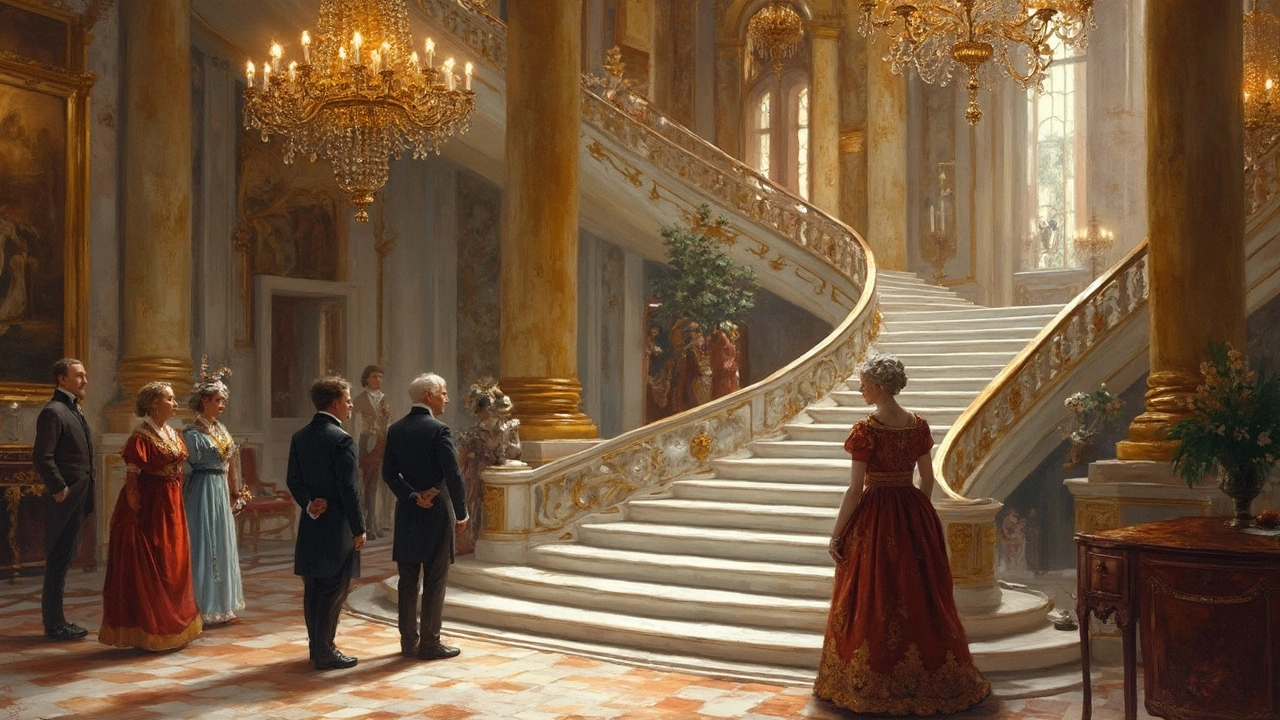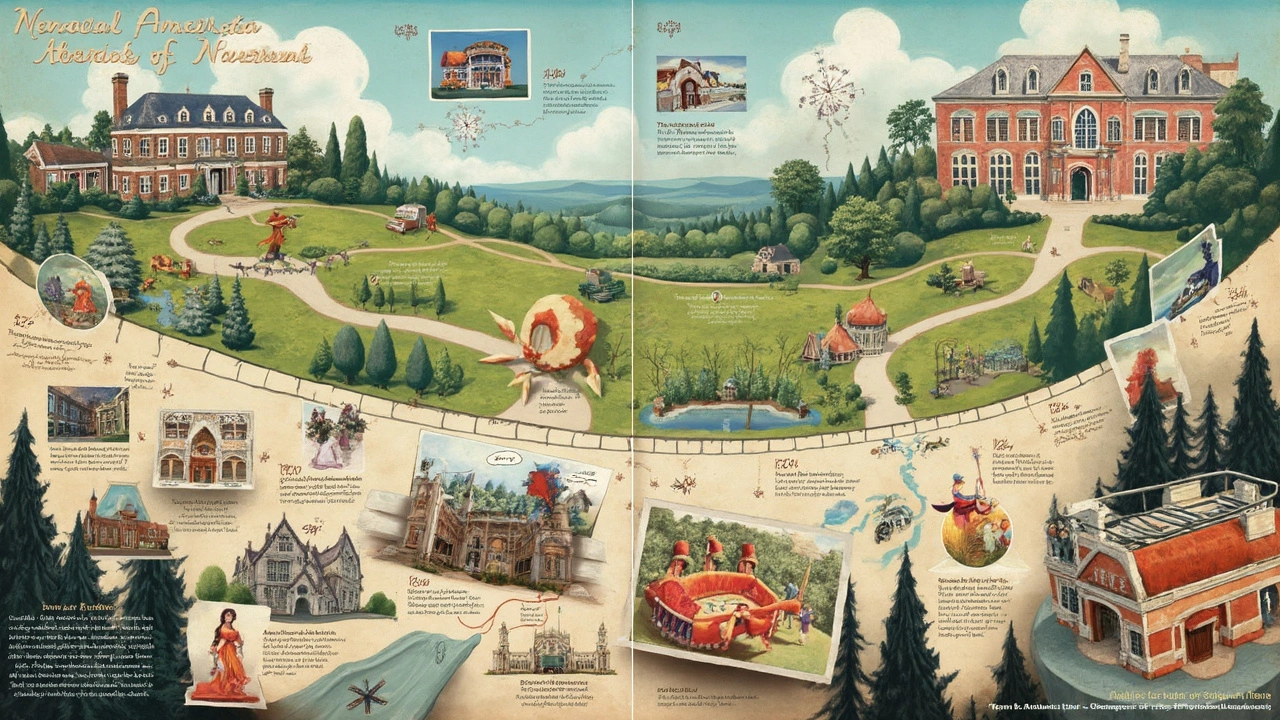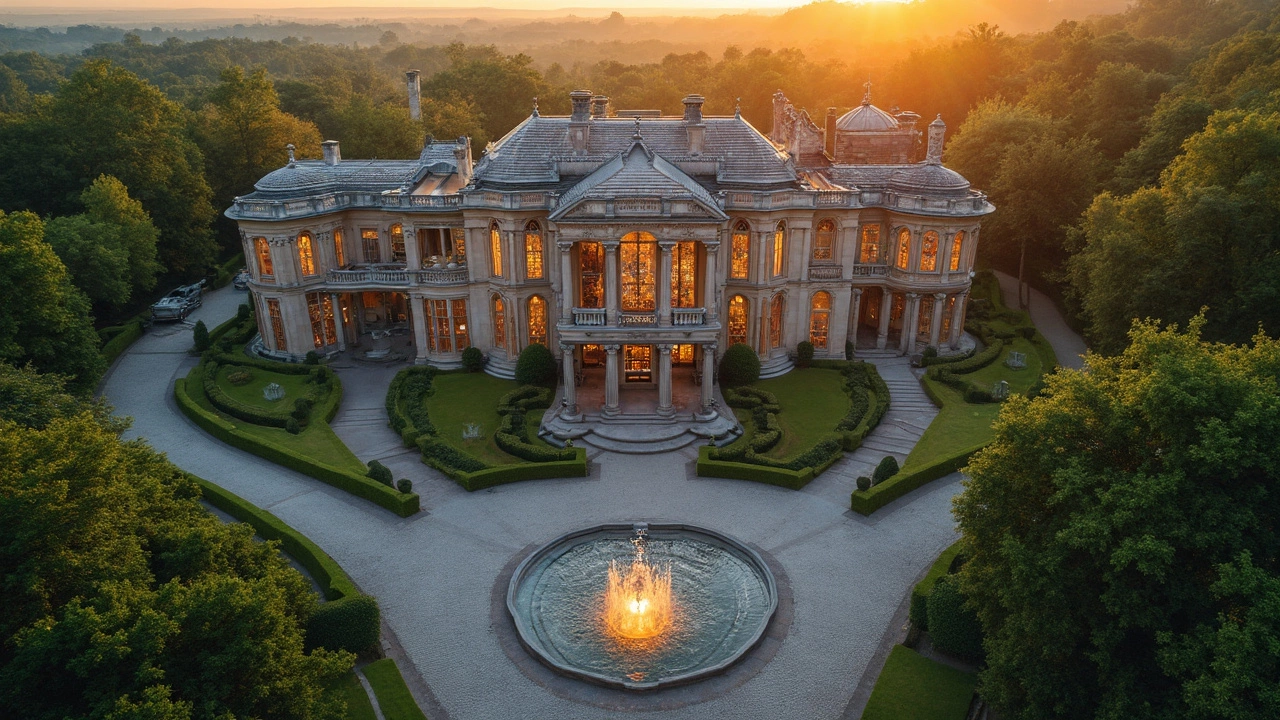Think you’ve seen big houses? The United States takes the word “mansion” to an unimaginable level. Some American homes aren’t just big—they’re almost cities. One house stands above the rest, though, and its owner’s story is like something you’d watch in a Hollywood movie marathon. This place could fit several high schools under one roof and still have room for a home theater and a bowling alley. Imagine living somewhere with so much space you could go days without bumping into another person. Sounds wild, right? Now let’s untangle the facts behind the biggest house in the USA—and who gets to call it home.
The Crown Jewel: The Biltmore Estate and Its Origins
Let’s start with the grandest home on American soil: the Biltmore Estate, nestled in Asheville, North Carolina. Built between 1889 and 1895, this 175,000-square-foot house is one part castle, one part stately home, one part fantasy world. To put those numbers in perspective, it’s about 68 times larger than the average American home. It’s so big you would need a map just to navigate inside. George Washington Vanderbilt II, a railroad and steamboat tycoon from the legendary Vanderbilt family, was the mastermind behind this jaw-dropping mansion. He wanted a getaway that felt more like a European chateau, complete with 250 rooms—including 35 bedrooms, 43 bathrooms, and a banquet hall that could seat royalty (it’s nearly 7 stories tall, if you can believe it!).
What drove Vanderbilts to build the Biltmore? Part social status, part vision, and part love for art and landscape. George hired Richard Morris Hunt, one of the era’s top architects, combined with Frederick Law Olmsted, the guy who landscaped Central Park. The result: a home with a glass-roofed conservatory, bowling alley, massive library, indoor pool, secret passages, and an estate grounds spanning over 8,000 acres. Some old-timers joke you could spend a year inside and never sit in the same chair twice. The structure itself is built in the French Renaissance style, with detail after detail that makes it feel like a European manor teleported to the American South.
Maybe you’re wondering about upkeep. As you can imagine, keeping those 250 rooms dust-free is not a one-person job. In Vanderbilt’s heyday, a team of servants kept everything running—cooks, maids, butlers, gardeners, you name it. The estate boasted cutting-edge technology for its day: elevators, a call-bell system, indoor plumbing, and even its own electric generator. These details make the Biltmore not just big but groundbreaking. Guests included presidents, writers, and society’s elite, all of whom marveled at its unrivaled grandeur. Fast forward to today, and the estate has become a major tourist attraction, but it’s still owned by Vanderbilt’s descendants (the Cecil family), who maintain and preserve this living piece of history. That right there is living large—literally and figuratively.

Bigger Isn’t Always Newer: The Record, the Owner, and the Competition
If you thought tech tycoons like Jeff Bezos or Elon Musk lived in the biggest house, think again. Plenty of modern billionaires have palaces in their own right, but none top the square footage of the Biltmore Estate. People love to brag about sprawling estates in places like California or Florida. Sure, there’s The One in Bel-Air—a 105,000-square-foot monster mansion—and mega-homes like Fair Field in New York, but neither can touch the sheer scale of the Biltmore.
The Biltmore’s modern owners, the descendants of George Vanderbilt, quietly manage what is still the biggest house in the USA. Instead of being locked behind golden gates for private use, the Cecils run it as a mix of family home, museum, and tourist destination. Each year, over a million people walk those historic halls, gaze at Klimt paintings, and explore rooms once meant for aristocrats and celebrities. The house still contains original furniture and art. This blend of accessible history and ongoing family stewardship makes Biltmore unique—nobody else opens up such a colossal private home for the public to wander through (well, not without a $100+ admission ticket anyway). Want to feel like a Vanderbilt for a day? You actually can, and you don’t need to know a single descendant.
As for those modern contenders, let’s talk specifics. The One in Bel-Air was originally listed at over $500 million, with amenities like five swimming pools, a nightclub, beauty salon, and jellyfish rooms (yes, really—live jellyfish). Fair Field in the Hamptons has 29 bedrooms, a massive bowling alley, two tennis courts, and its own museum-grade sculpture garden. Still, neither property reaches Biltmore’s floor plan. The only thing that comes close is the never-finished Versailles Mansion in Florida, at around 90,000 square feet, owned by David and Jackie Siegel. But as of now, the Biltmore continues to reign supreme for size and legacy.

What It’s Like to Live in a Mega Mansion: Tips, Trivia, and Wild Realities
Living in a place as big as the Biltmore isn’t the fantasy you might picture. Besides the snapshots you see on glossy magazine covers, there’s a ton of logistics. Heating a space the size of a small university campus? You’ll deal with utility bills in the six figures. Security is serious too; there are cameras, guards, and even trained dogs. Want to host a party? No problem—invite a few hundred guests and you’ll barely fill one wing. But if you’re living there solo, don’t forget your phone; you’ll probably need help just to find your way to the kitchen.
It’s not all old money glamour or endless parties either. The Vanderbilt descendants, like many ultra-rich mansion owners, face challenges that are a bit outside normal house worries. Antique furniture restoration is constant—it takes specialists to restore 19th-century wallpaper or replace hand-blown glass windows. Then there’s maintenance outside the house: the grounds need crews working year-round, with acres of gardens, lakes, and woodlands to keep neat. In fact, if you ever visit, you’ll spot entire teams just for flower beds and hedge-maze trimming. During the holidays, it takes almost a month to decorate the entire estate with thousands of ornaments and miles of Christmas lights.
The house isn’t just a museum; parts of it still function as family space. In interviews, the Cecils have shared stories about playing hide-and-seek as kids or skating down the endless hallways. Occasionally, the family hosts private events—weddings, milestone birthdays, and small gatherings in rooms that would dwarf a Manhattan apartment. The guest list is usually a mix of friends, historians, and the occasional celebrity. Working on a mansion this size means inventing traditions—there’s even an annual competition among housekeepers to see who can polish the most silverware in a day. Now that’s a way to keep history alive, one fork at a time.
Despite all the labor, the magic of living at the Biltmore is real. There’s a nightly ritual where the house settles into quiet, and if you walk through the halls, you’ll swear you can hear the echoes of old jazz bands or laughter from Gilded Age balls. Want a tip on visiting? Go during spring: the gardens explode with color, you can tour the vineyards, and you’ll get a sense why George Vanderbilt picked this rolling, scenic spot in the first place. Biltmore also holds sweet little secrets—there’s a hidden door in the library, occasional ghost sightings (so the legend goes), and even a rare breed of roses growing out back.
If you ever daydreamed about a life beyond ordinary houses, this is the American home that blew the ceiling off our biggest ambitions. The Biltmore isn’t just large—it’s legendary. And its story, with roots stretching across centuries and families, keeps it just as alive and surprising as the day the paint first dried on its towering walls.
